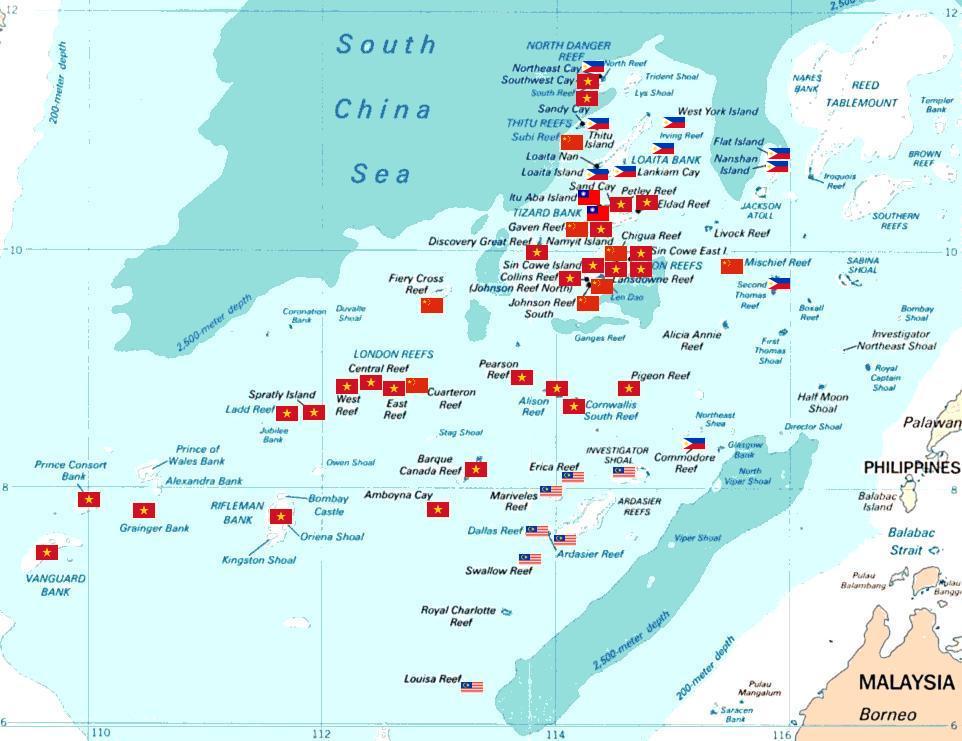|
Slicing (other)
Slicing may refer to: * Array slicing, an operation on an array in computer science * Chinese salami slicing strategy * Object slicing, an object-oriented programming issue * Program slicing, a set of software engineering methods * Slicing, a mechanical process, see Cutting * Slicing (interface design), image slicing for web design and interface design * Slow slicing, a Chinese form of torture and execution * 3D printing#Printing, Slicing (3D printing), the software operation of producing a G-code file from a 3D model file, in preparation for 3D printing. See also * Slice (other) {{disambig ... [...More Info...] [...Related Items...] OR: [Wikipedia] [Google] [Baidu] |
Array Slicing
In computer programming, array slicing is an operation that extracts a subset of elements from an array and packages them as another array, possibly in a different dimension from the original. Common examples of array slicing are extracting a substring from a string of characters, the "''ell''" in "h''ell''o", extracting a row or column from a two-dimensional array, or extracting a vector from a matrix. Depending on the programming language, an array slice can be made out of non-consecutive elements. Also depending on the language, the elements of the new array may be aliased to (i.e., share memory with) those of the original array. Details For "one-dimensional" (single-indexed) arrays vectors, sequence, strings etc. the most common slicing operation is extraction of zero or more consecutive elements. Thus, if we have a vector containing elements (2, 5, 7, 3, 8, 6, 4, 1), and we want to create an array slice from the 3rd to the 6th items, we get (7, 3, 8, 6). In programming l ... [...More Info...] [...Related Items...] OR: [Wikipedia] [Google] [Baidu] |
Chinese Salami Slicing Strategy
China's salami slicing (; Robert BarnettChina Is Building Entire Villages in Another Country’s Territory Foreign Policy, 7 May 2021.) is a strategy by which the government of China uses small provocations, none of which would constitute a '' casus belli'' by itself, but cumulatively produce a much larger action or result in China's favor which would have been difficult or unlawful to perform all at once. In 1996, a United States Institute of Peace report on the territorial disputes in the South China Sea wrote, " €¦analysts point to Chinese "salami tactics," in which China is said to test the other claimants through aggressive actions, then back off when it meets significant resistance." The term "salami slice strategy" has been used to describe policies that incrementally improve China's foreign policy position. [...More Info...] [...Related Items...] OR: [Wikipedia] [Google] [Baidu] |
Object Slicing
In C++ programming, object slicing occurs when an object Object may refer to: General meanings * Object (philosophy), a thing, being, or concept ** Object (abstract), an object which does not exist at any particular time or place ** Physical object, an identifiable collection of matter * Goal, an ... of a Subtyping, subclass type is copied to an object of superclass type: the superclass copy will not have any of the member variables or Method_(computer_programming)#Member_functions_in_C++, Member functions defined in the subclass. These variables and functions have, in effect, been "sliced off". More subtly, object slicing can likewise occur when an object of a subclass type is copied to an object of the ''same'' type by the superclass's assignment operator, in which case some of the target object's member variables will retain their original values instead of getting copied over from the source object. This issue is not inherently unique to C++, but it does not occur na ... [...More Info...] [...Related Items...] OR: [Wikipedia] [Google] [Baidu] |
Program Slicing
In computer programming, program slicing is the computation of the set of program statements, the program slice, that may affect the values at some point of interest, referred to as a slicing criterion. Program slicing can be used in debugging to locate source of errors more easily. Other applications of slicing include software maintenance, optimization, program analysis, and information flow control. Slicing techniques have been seeing a rapid development since the original definition by Mark Weiser. At first, slicing was only static, i.e., applied on the source code with no other information than the source code. Bogdan Korel and Janusz Laski introduced ''dynamic slicing'', which works on a specific execution of the program (for a given execution trace). Other forms of slicing exist, for instance path slicing. Static slicing Based on the original definition of Weiser, informally, a static program slice S consists of all statements in program P that may affect the value ... [...More Info...] [...Related Items...] OR: [Wikipedia] [Google] [Baidu] |
Cutting
Cutting is the separation or opening of a physical object, into two or more portions, through the application of an acutely directed force. Implements commonly used for wikt:cut, cutting are the knife and saw, or in medicine and science the scalpel and microtome. However, any sufficiently sharp object is capable of cutting if it has a hardness sufficiently larger than the object being cut, and if it is applied with sufficient force. Even liquids can be used to cut things when applied with sufficient force (see water jet cutter). Cutting is a compression (physical), compressive and shearing (physics), shearing phenomenon, and occurs only when the total stress (physics), stress generated by the cutting implement exceeds the ultimate Strength of materials, strength of the material of the object being cut. The simplest applicable equation is: \text = or \tau=\frac The stress generated by a cutting implement is directly proportional to the force with which it is applied, and in ... [...More Info...] [...Related Items...] OR: [Wikipedia] [Google] [Baidu] |
Slicing (interface Design)
In fields employing interface design skills, slicing is the process of dividing a single 2D user interface composition layout (comp) into multiple image files (digital assets) of the graphical user interface (GUI) for one or more electronic pages. It is typically part of the client side development process of creating a web page and/or web site, but is also used in the user interface design process of software development and game development. The process involves partitioning a comp in either a single layer mage file formator the multi-layer native file format of the graphic art software used for partitioning. Once partitioned, one would save them as separate image files, typically in GIF, JPEG or PNG format in either a batch process or one at a time. Multi-layered image files may include multiple versions or states of the same image, often used for animations or widgets. Practical usage Slicing is used in many cases where a graphic design layout must be implemented as interac ... [...More Info...] [...Related Items...] OR: [Wikipedia] [Google] [Baidu] |
Slow Slicing
''Lingchi'' (; ), translated variously as the slow process, the lingering death, or slow slicing, and also known as death by a thousand cuts, was a form of torture and execution used in China from roughly 900 CE up until the practice ended around the early 1900s. It was also used in Vietnam and Korea. In this form of execution, a knife was used to methodically remove portions of the body over an extended period of time, eventually resulting in death. ''Lingchi'' was reserved for crimes viewed as especially heinous, such as treason. Some Westerners were executed in this manner. Even after the practice was outlawed, the concept itself has still appeared across many types of media. Etymology The term ''lingchi'' first appeared in a line in Chapter 28 of the third-century BCE philosophical text '' Xunzi''. The line originally described the difficulty in travelling in a horse-drawn carriage on mountainous terrain. Later on, it was used to describe the prolonging of a person's ago ... [...More Info...] [...Related Items...] OR: [Wikipedia] [Google] [Baidu] |
3D Printing
3D printing or additive manufacturing is the Manufacturing, construction of a three-dimensional object from a computer-aided design, CAD model or a digital 3D modeling, 3D model. It can be done in a variety of processes in which material is deposited, joined or solidified under Computer Numerical Control, computer control, with material being added together (such as plastics, liquids or powder grains being fused), typically layer by layer. In the 1980s, 3D printing techniques were considered suitable only for the production of functional or aesthetic prototypes, and a more appropriate term for it at the time was rapid prototyping. , the precision, repeatability, and material range of 3D printing have increased to the point that some 3D printing processes are considered viable as an industrial-production technology, whereby the term ''additive manufacturing'' can be used synonymously with ''3D printing''. One of the key advantages of 3D printing is the ability to produce very ... [...More Info...] [...Related Items...] OR: [Wikipedia] [Google] [Baidu] |



